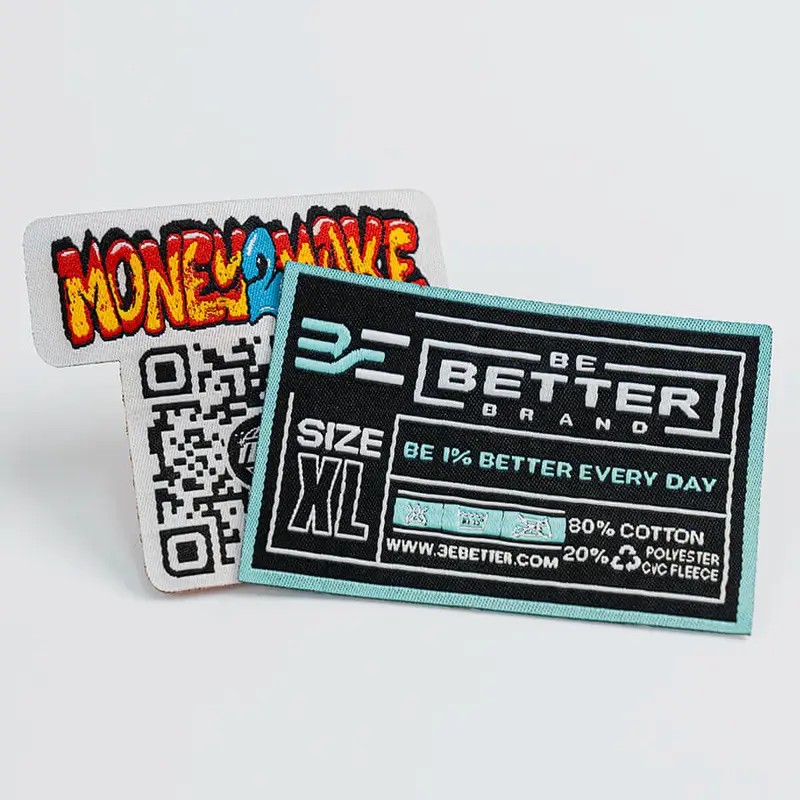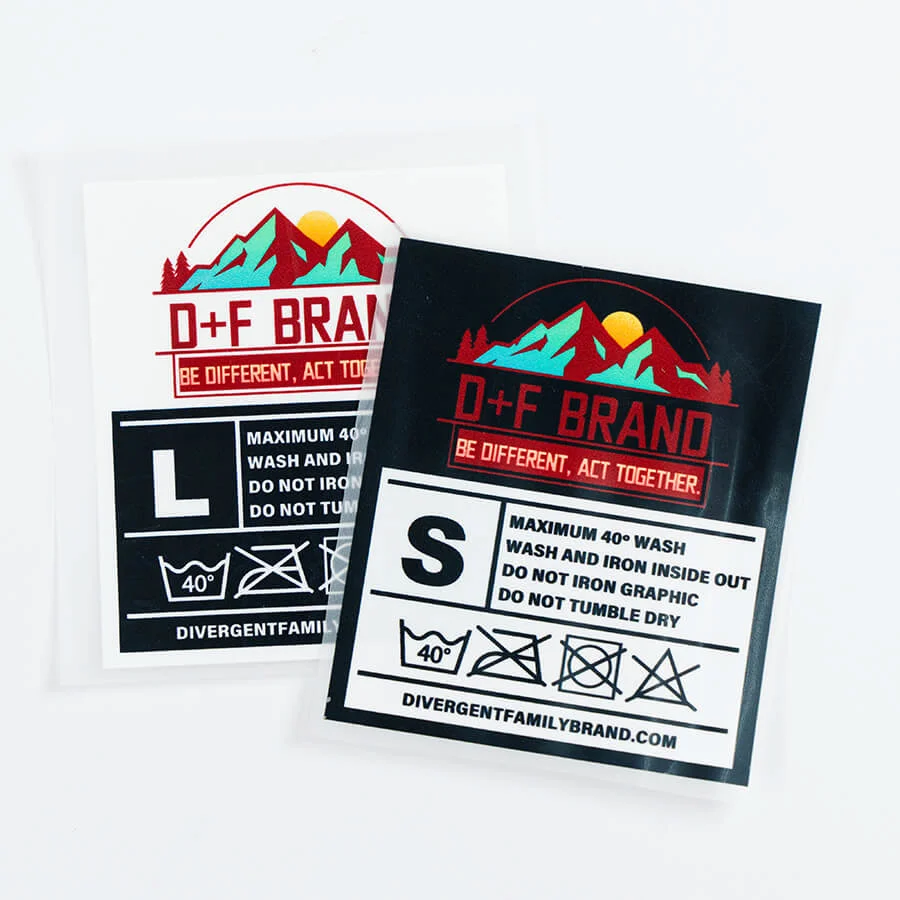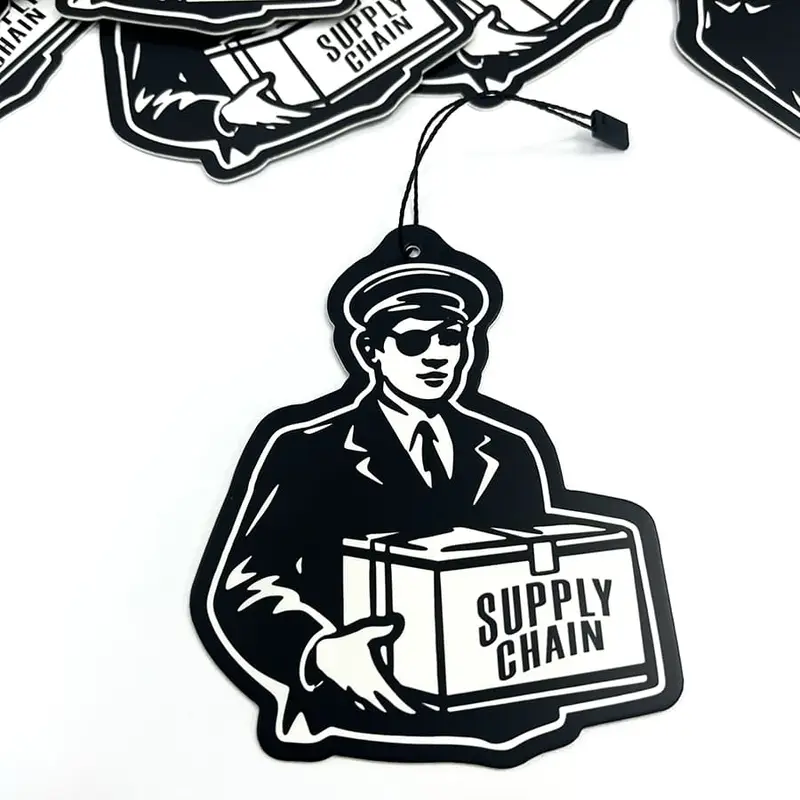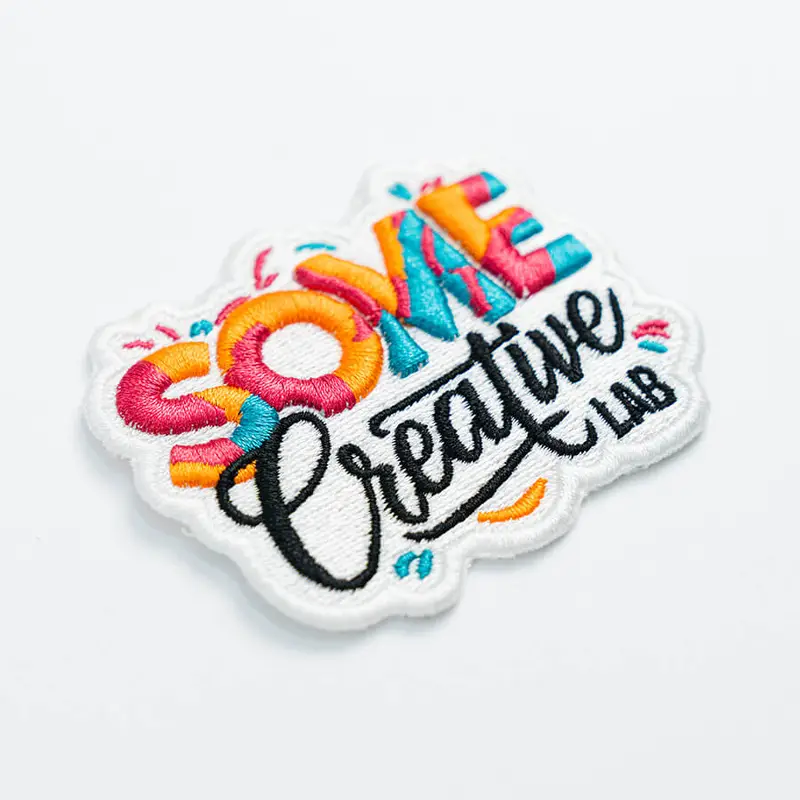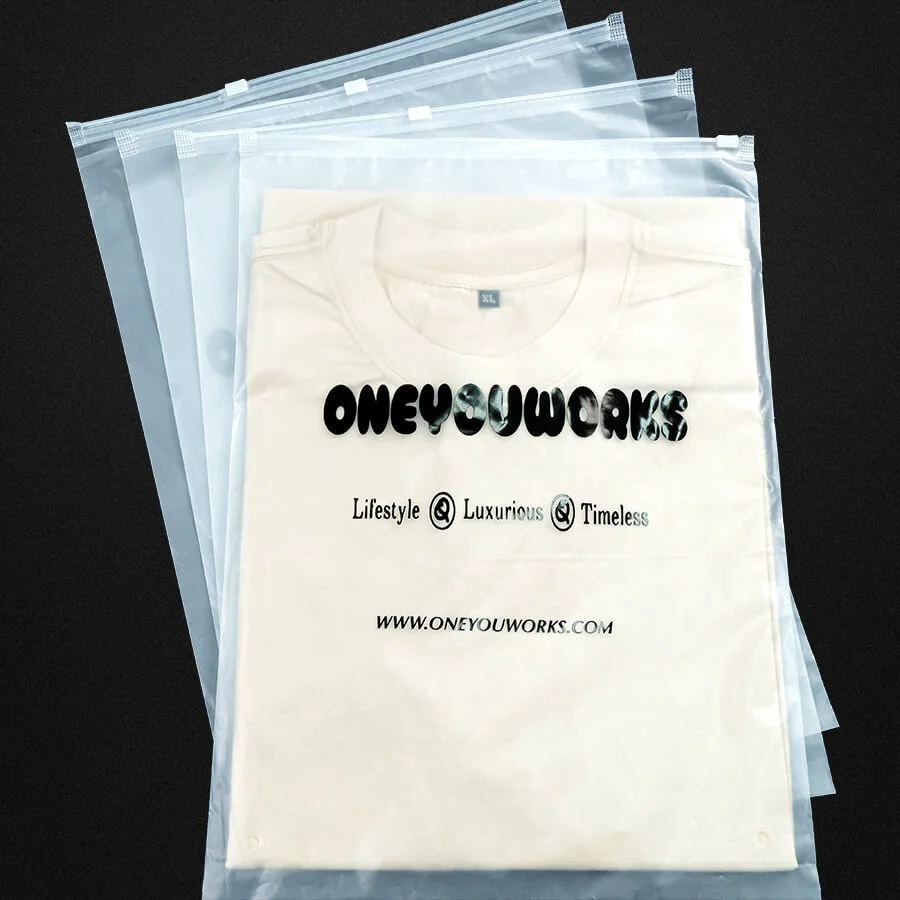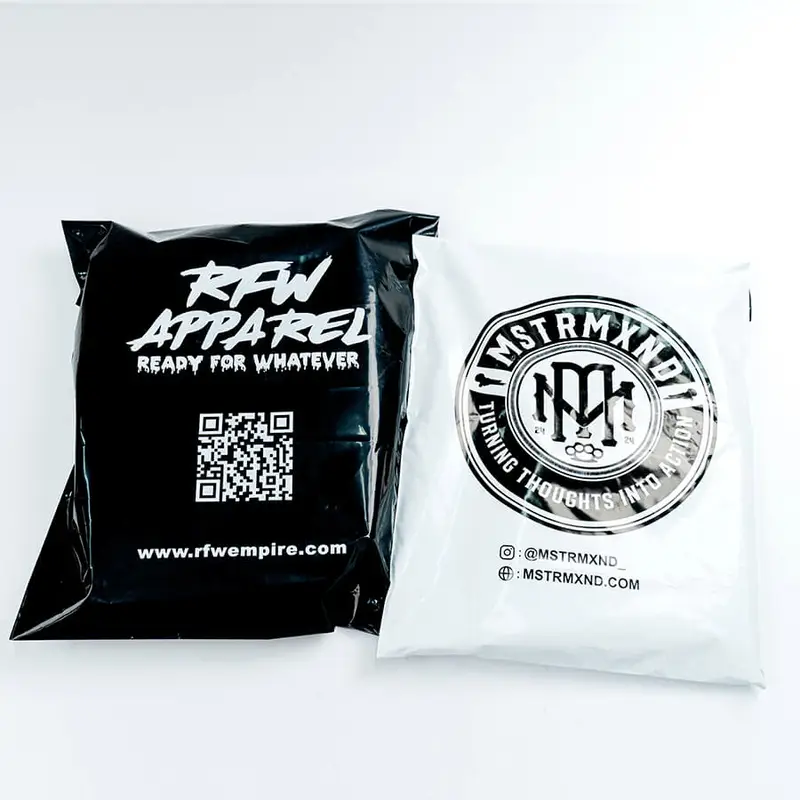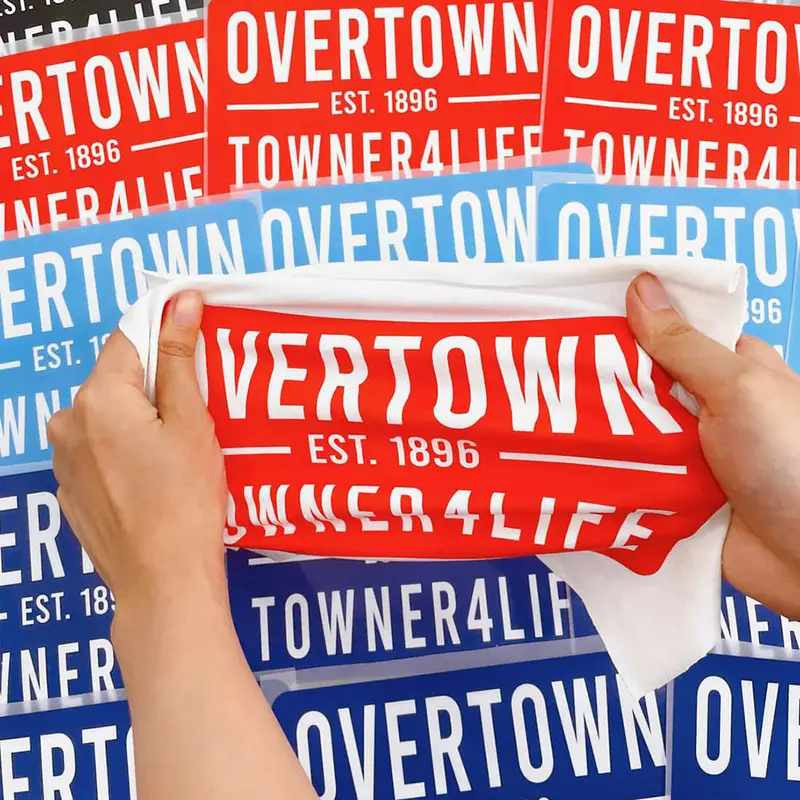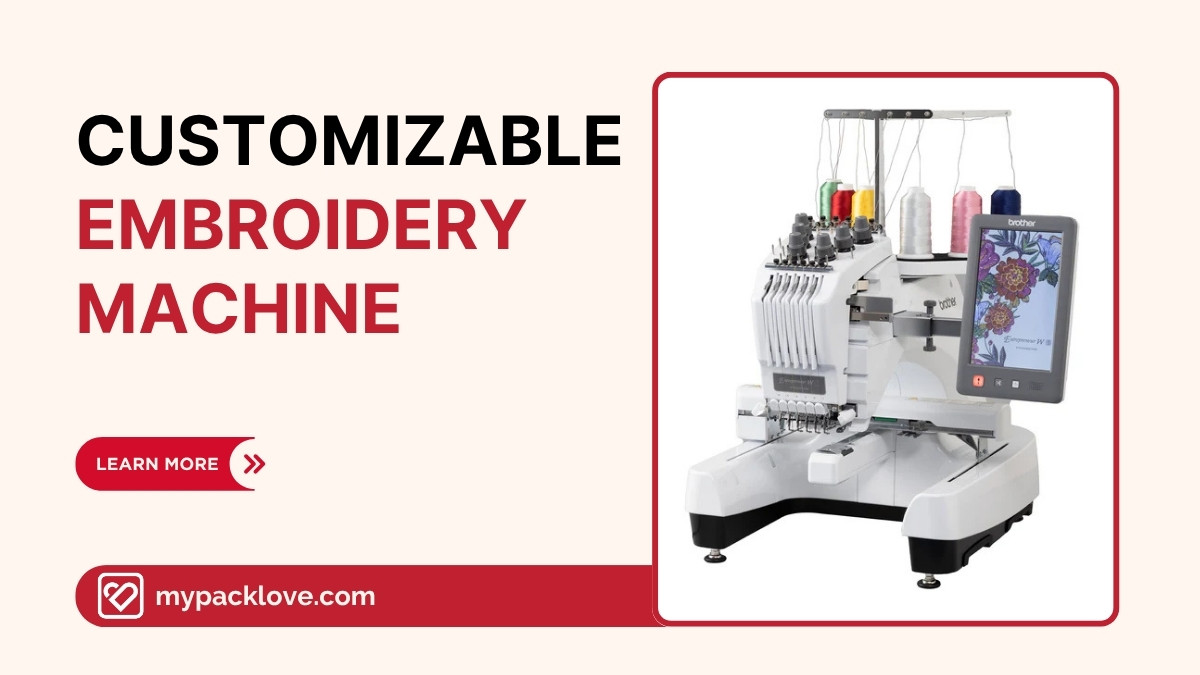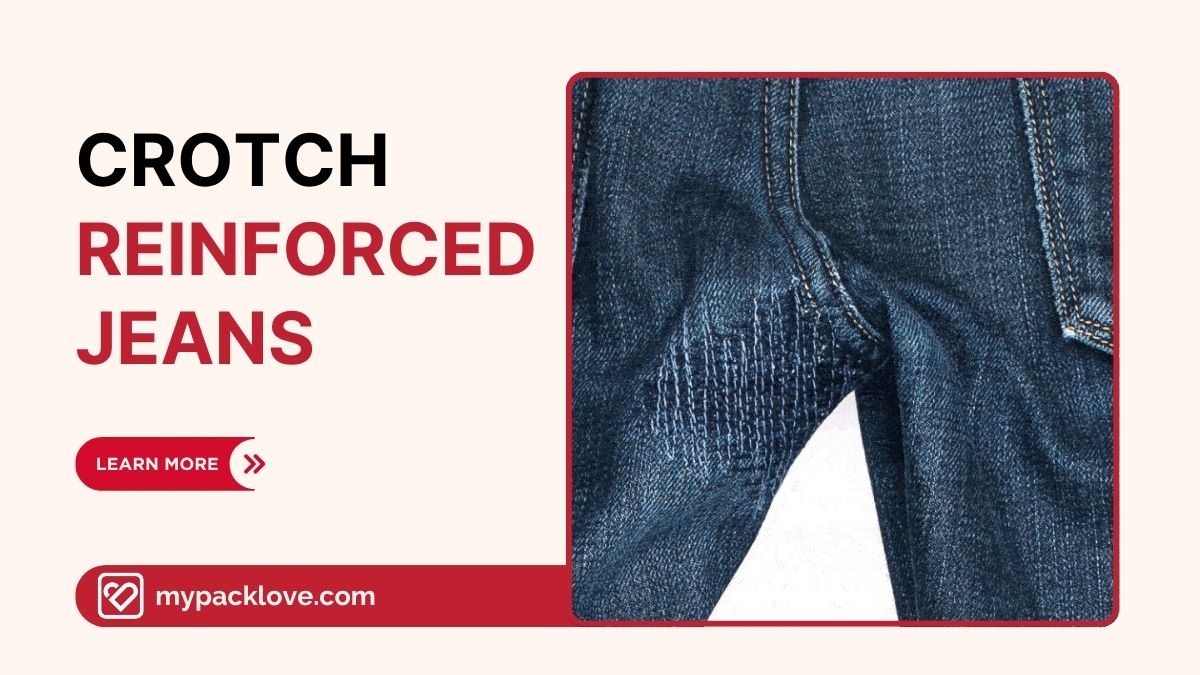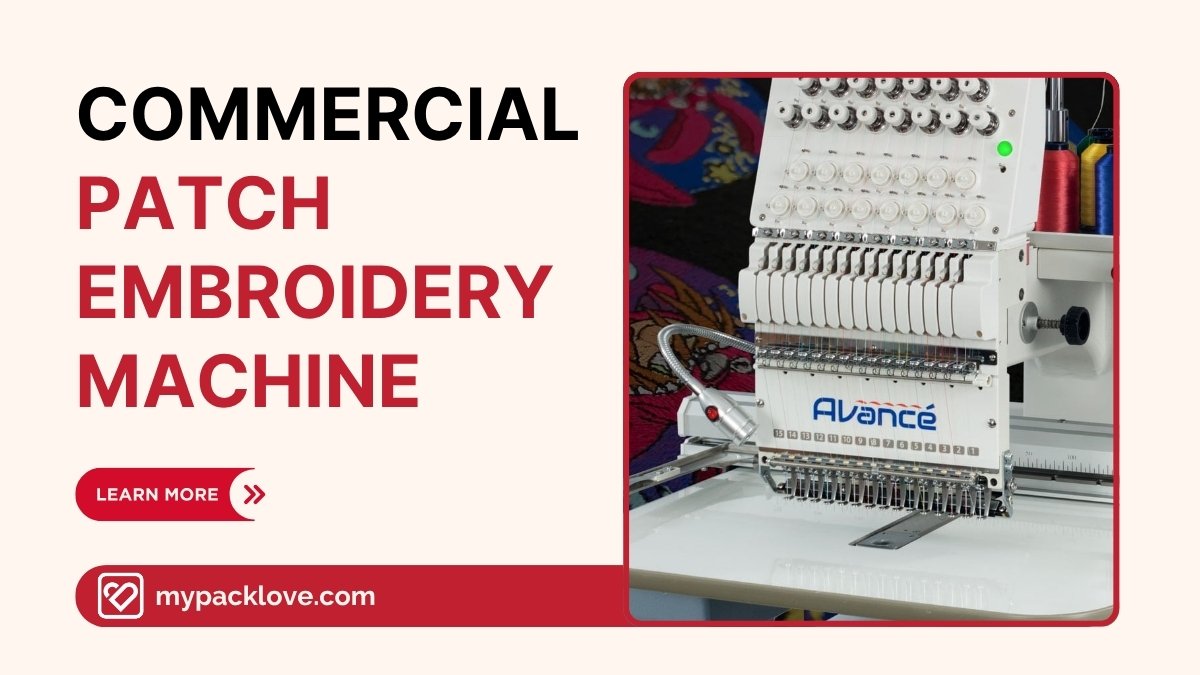Zipper Bag Materials: Plastic, Fabric and Eco-Friendly Options
Finding the perfect zipper bag for your small business needs can be a challenge. From storing inventory to packaging products for shipping, the right material is crucial for product freshness, durability, and sustainability. This guide dives into the advantages and disadvantages of plastic, fabric, and eco-friendly zipper bag materials, helping you select the ideal option for your specific requirements and priorities. Whether you’re focused on cost-effectiveness, preserving product quality, or minimizing your environmental impact, understanding the nuances of each material is key to making the best decision for your business.
1. Understanding zipper bag materials
Choosing the right material for your zipper bags is crucial for a variety of reasons. The material impacts everything from the freshness of your products to the environmental footprint of your business. Whether you’re using zipper bags for packaging, storage, or transporting goods, the correct material choice is essential.
This section explores the key considerations when selecting the ideal material for your needs. Three primary categories dominate the market: plastic, fabric, and eco-friendly options. The best choice often depends on your specific intended use, budget, and environmental concerns.
Factors like reusability, biodegradability, and compostability all play a part in making an informed decision. Zip-top pouches and containers made from these materials serve diverse purposes across industries.
2. Plastic zipper bags: Versatile and economical
2.1 Types of plastic used in zipper bags (and their properties)
Plastic zipper bags are incredibly versatile, largely due to the diverse types of plastic used in their production. Two common plastics, polyethylene (PE) and polypropylene (PP), form the foundation of many zip-top bags, containers, and pouches. Understanding their properties is key to selecting the right material for your specific needs.
Polyethylene (PE), a widely used plastic, comes in various forms, each with distinct characteristics. A common form is low-density polyethylene (LDPE). LDPE is known for its flexibility and relative thinness. This makes it ideal for thinner, more pliable bags, frequently used for food packaging and storage.
Its lower density often translates to a more transparent material, suitable for showcasing the contents inside. LDPE is also reasonably resistant to moisture and some chemicals, though not as resistant as HDPE. Think of the thinner, more flexible bags often found in many popular brand names like Ziploc, Glad, and Hefty.
In contrast, high-density polyethylene (HDPE) offers enhanced strength and rigidity. Its higher density gives it a more substantial feel, making it suitable for applications requiring greater durability. HDPE is often more resistant to moisture and chemicals compared to LDPE.
This translates to its use in thicker, more robust bags and containers, better suited to holding heavier items or those needing extra protection from the elements. While HDPE might not be as transparent as LDPE, it excels in tasks demanding strength and stability.
Polypropylene (PP) is another significant plastic used in zipper bag production. PP typically offers a balance of strength, rigidity, and chemical resistance. It often maintains its shape well under stress, leading to its use in containers and bags needing to maintain form.
PP also typically displays good resistance to many chemicals, making it a versatile choice for diverse storage needs. Additionally, PP is often available in a variety of colors and can withstand high temperatures, increasing its usefulness in certain applications.
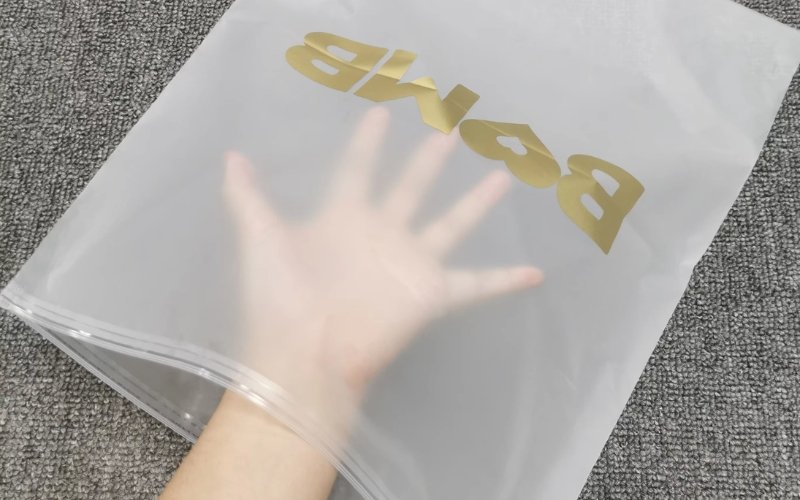
2.2 Advantages and disadvantages of plastic zipper bags
Plastic zipper bags offer a compelling blend of practicality and affordability, making them a popular choice for various applications. Their advantages are numerous:
Durability is a key strength. Plastic is inherently resistant to tearing and punctures, making it ideal for protecting items during transit and storage. This robust nature translates to a longer lifespan compared to some other materials, reducing the need for frequent replacements. The lightweight nature of plastic further enhances its convenience.
Cost-effectiveness is another major draw. Plastic is generally less expensive to produce than many alternatives, making plastic zipper bags a budget-friendly solution for businesses. Their wide availability further contributes to this affordability.
The waterproof and airtight properties of plastic are significant advantages. This characteristic effectively prevents moisture from entering the bag, preserving freshness and extending the shelf life of many products. This is especially crucial for food storage and shipping, mitigating the risks of spoilage.
However, plastic zipper bags also present a set of disadvantages:
- The environmental impact of plastic production is undeniable. Most plastics are petroleum-based, creating a dependence on fossil fuels and contributing to greenhouse gas emissions during manufacturing. Moreover, the vast majority of plastics are non-biodegradable, meaning they persist in the environment for an extended period. This leads to widespread plastic pollution, posing risks to ecosystems and human health.
- Recyclability of plastic bags is not a universal guarantee. Though some types of plastic are recyclable, the process often depends on the availability of specialized facilities in the local area. Not all plastic types are readily accepted in recycling programs, and even if accepted, the recycling process can be complex. Local regulations and facilities for recycling must be considered.
- The pervasive presence of plastic pollution adds another layer of concern. The accumulation of plastic waste in landfills, oceans, and other environments presents a significant environmental problem. This concern affects not only the natural world but also human health, with potential impacts on wildlife, marine ecosystems, and human communities.
2.3 Applications of plastic zipper bags
Plastic zipper bags, with their versatility and practicality, find numerous applications across various industries and personal needs. Their durable construction and moisture-resistant properties make them invaluable for a wide range of uses.
Food storage is a significant application. Plastic zipper bags, particularly freezer bags and sandwich bags, are indispensable for storing and transporting food. Freezer bags are ideal for portioning and preserving leftovers for later use, protecting them from freezer burn and maintaining freshness. Sandwich bags are well-suited for storing prepared meals or snacks in the refrigerator, maintaining their freshness for lunch or on-the-go consumption. Their airtight seal prevents spills and contamination.
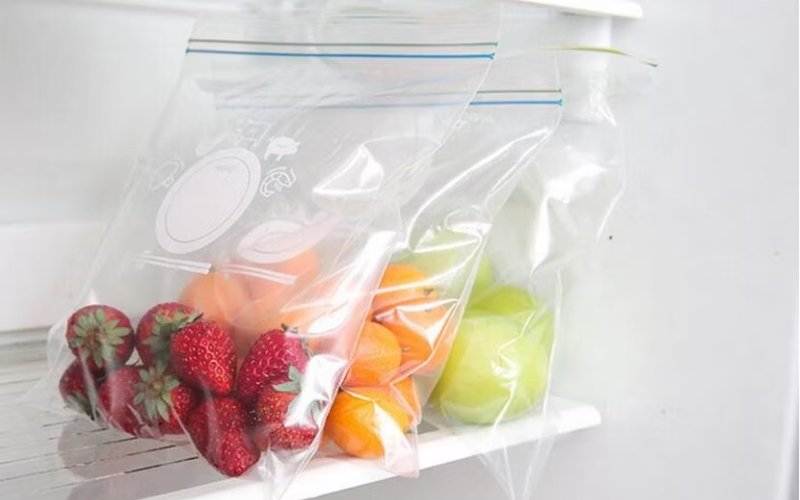
Travel organization benefits significantly from plastic zipper bags. Packing cubes, for instance, often use plastic zipper bags for their organizational ability and to protect clothing from wrinkles and dirt. Travelers use these bags to neatly bundle toiletries, electronics accessories, or documents to prevent items from getting lost or damaged during travel. Sample bags, for instance, are frequently used to transport various items.
Storing small items is another key application. Plastic zipper bags provide an organized and portable way to keep small items like craft supplies, sewing notions, or hobby materials. This organized storage method keeps items from getting lost and prevents spills.
Industrial applications of plastic zipper bags are extensive. Many industries, from manufacturing to healthcare, utilize these bags for packaging products, samples, and tools. They are commonly employed in laboratories for safely storing and transporting laboratory samples and equipment.
Protecting documents is an important use. Plastic zipper bags can safeguard important papers, receipts, or other documents by offering a moisture barrier. They can be used to store passports or other valuable documents, protecting them from moisture damage and ensuring longevity.
3. Fabric zipper bags: Reusable and stylish
3.1 Exploring different fabric options for zipper bags
Choosing the right fabric for your zipper bags is key, impacting everything from durability to sustainability. Beyond plastic, a range of natural and synthetic fibers offer distinct advantages. Canvas, a durable and sturdy option, is a popular choice for bags needing to withstand significant use. Its thick weave provides resilience and strength, making it suitable for holding heavy items and enduring wear and tear.
Cotton, a widely appreciated natural fiber, stands out for its softness and breathability. This makes it a good choice for items that need to breathe, like storing clothing or textiles. Its gentle texture adds a touch of comfort, while muslin, a lightweight form of cotton, offers an even more breathable alternative, useful for delicate items. Both cotton varieties lend themselves well to applications where a soft touch is desired, or where airflow is important.
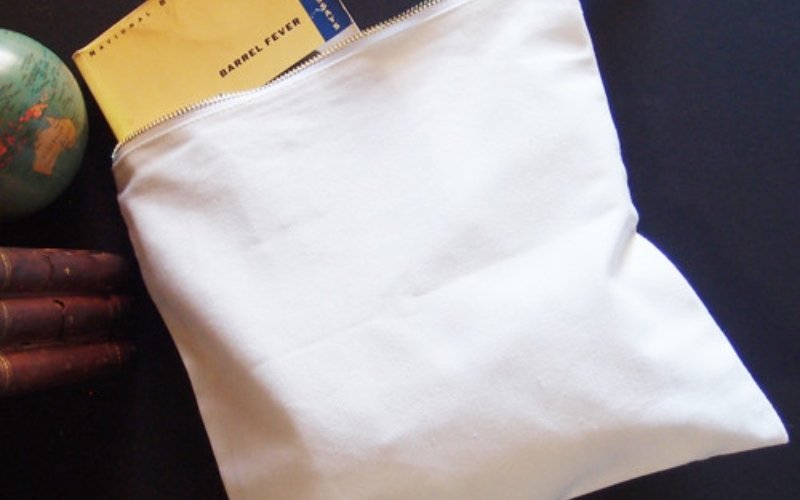
Jute, a natural fiber derived from the jute plant, represents a sustainable choice. Its biodegradable nature makes it an eco-friendly alternative for those concerned about the environmental impact of their packaging. Jute’s strength and natural texture give it a rustic aesthetic, which appeals to some, while burlap, another natural fiber, offers similar qualities in terms of texture and sustainability.
For those prioritizing ethical sourcing, organic cotton presents a compelling option. Its cultivation avoids harmful pesticides, aligning with consumer preferences for environmentally friendly and health-conscious products. Organic cotton’s soft texture and breathability combine ethical sourcing with a comfortable user experience.
3.2 Benefits and drawbacks of fabric zipper bags
Fabric zipper bags offer a compelling alternative to plastic, presenting a range of advantages alongside some potential drawbacks. A key benefit is their reusability, making them a strong eco-friendly choice. Unlike their plastic counterparts, fabric bags can be washed and reused, reducing the need for constant replacements and contributing to a circular economy. This reusability aligns with a growing consumer preference for sustainable packaging solutions, lessening environmental impact.
Beyond their eco-friendliness, fabric bags often boast an appealing aesthetic. They can be designed with a variety of colors, patterns, and textures, offering significant customization options. This flexibility allows for branding opportunities, fostering a sense of personalization and individuality that resonates with many consumers. Businesses can create bags that reflect their unique brand identity, from simple, understated designs to vibrant, eye-catching patterns.
However, fabric zipper bags do come with some potential drawbacks. Typically, the initial investment in fabric bags might be higher compared to plastic. The cost of materials and potentially more complex manufacturing processes can contribute to a higher upfront price tag.
While the long-term cost savings through reusability exist, the initial expenditure might be a deterrent for some. Moreover, fabric bags can take longer to dry after washing, requiring careful consideration of turnaround times when incorporating them into workflows. This drying time is an element to account for in terms of operation efficiency.
Despite these considerations, the ability to reuse, customize, and express a brand identity through fabric bags often outweighs the initial higher cost and slower drying times. Their unique aesthetic appeal and eco-friendliness offer businesses and consumers an attractive alternative to plastic. The sustainable benefits of reusability, coupled with creative customization options, position fabric zipper bags as a viable and increasingly popular choice.
3.3 Uses for fabric zipper bags
Fabric zipper bags offer a surprising versatility, extending far beyond the typical notion of simple storage. Their practical and aesthetically pleasing qualities make them highly adaptable to a wide range of needs. Travelers, for example, can effectively organize cosmetics, toiletries, and small accessories within fabric zipper bags.
The compact and reusable nature of these bags eliminates the need for multiple plastic containers and makes packing more streamlined. Makeup bags and pencil cases, designed from durable fabric, are popular examples, offering both organized storage and a stylish touch.
Beyond travel, fabric zipper bags contribute to general organization in the home and workplace. These bags can serve as convenient containers for storing craft supplies, like beads, buttons, or yarn, keeping them organized and readily accessible.
Similarly, their practicality extends to carrying snacks or lunches to work or school. Reusable fabric sandwich bags, designed with durable zippers, protect food and eliminate the need for single-use plastic alternatives. The aesthetic appeal of patterned or personalized fabric bags can make these reusable lunch bags engaging and attractive.
Moreover, fabric zipper bags excel as thoughtful gift packaging. A beautifully designed fabric bag with a personalized touch adds a personal touch to a gift, showcasing a commitment to sustainability and individuality. The bags can be customized with various embellishments or printed with unique designs, reflecting the recipient’s interests or the occasion.
4. Eco-Friendly zipper bags: Sustainable choices
4.1 Biodegradable and compostable materials
The terms “biodegradable” and “compostable” often get used interchangeably, but they represent distinct processes. Biodegradable materials break down naturally through biological processes, primarily the action of microorganisms.
This breakdown, however, can be incomplete, leaving behind fragments or potentially harmful residues. Compostable materials, on the other hand, are designed to decompose completely into natural substances under specific controlled composting conditions. This complete decomposition is key to their environmental benefits. Understanding this difference is crucial for choosing the right materials for sustainable packaging.
One commonly encountered material in this category is PLA (polylactic acid), a bioplastic derived from renewable resources like cornstarch. Other bioplastics utilize various plant-based sources. While these materials represent a move toward sustainable alternatives, their effectiveness hinges on proper disposal.
Properly composting PLA and other bioplastics requires specific conditions, unlike simply tossing them into a home compost bin, which may not provide the necessary temperature and moisture levels for complete decomposition. Industrial composting facilities are often necessary. Incorrect disposal can negate the environmental advantages.
Oxo-biodegradable plastics, intended to degrade faster than traditional plastics through oxidation, present a more complex picture. While they might break down faster than traditional plastics, this process doesn’t always result in complete decomposition and can frequently leave behind microplastics, raising concerns about pollution.
These materials often need specific industrial composting facilities. Consumers should carefully consider the environmental impact of oxo-biodegradable materials, opting for fully compostable options whenever possible to ensure complete degradation and avoid microplastic contamination.
4.2 Advantages and disadvantages of eco-friendly options
Eco-friendly zipper bags, made from biodegradable or compostable materials, offer a significant advantage in terms of environmental impact. Derived from renewable resources like cornstarch or plant starches, these bags reduce the reliance on fossil fuels associated with traditional plastic production, thus contributing to a smaller carbon footprint.
Furthermore, their potential for complete decomposition in industrial composting facilities minimizes landfill waste, representing a clear step toward a more sustainable packaging solution. This approach offers a way to reduce pollution and lessen the environmental burden of packaging.

However, these eco-friendly options often present some potential drawbacks. One notable concern is the potentially higher cost compared to traditional plastic bags. The more complex manufacturing processes and sourcing of renewable raw materials can contribute to a higher price point.
Furthermore, certain eco-friendly materials might exhibit lower durability compared to some plastics, affecting their suitability for all applications, and a balance must be struck between material strength and environmental friendliness. Limited availability in some regions can also pose a challenge for consumers and businesses alike.
Another key consideration is the need for access to appropriate composting facilities. While these materials are designed for decomposition, their complete breakdown into harmless components necessitates specialized industrial composting facilities.
This availability varies by region and not all communities have the necessary infrastructure. Proper disposal in these facilities is crucial to realizing the full environmental benefits of these materials. Without adequate access to such facilities, the bags may not achieve their intended environmentally responsible breakdown.
4.3 Applications of eco-friendly zipper bags
Eco-friendly zipper bags are finding increasing application in a variety of settings, demonstrating their versatility and growing appeal to sustainable businesses and environmentally conscious consumers. Sustainable food businesses are increasingly utilizing these bags for storing and transporting prepared meals, reducing their reliance on single-use plastic.
The bags’ durability and ability to maintain freshness are making them a valuable alternative to conventional packaging. Similarly, retailers are incorporating these bags into their product packaging, offering customers a more sustainable option while reinforcing their commitment to environmentally friendly practices. This approach allows businesses to reduce their plastic waste and connect with environmentally mindful customers.
Moreover, these bags are finding their place as replacements for traditional plastic bags in various settings. From farmers’ markets offering produce in reusable bags to businesses providing packaging solutions for their customers, eco-friendly alternatives are becoming increasingly integrated into daily operations.
This shift toward reduced plastic waste is driven by consumer demand and a wider societal awareness of the need for more sustainable practices across various sectors.
5. Choosing the right zipper bag for your needs
Choosing the right zipper bag hinges on understanding your specific needs and priorities. Before making a purchase, consider the intended use of the bag: will it primarily be for food storage, travel organization, or perhaps craft supplies? The frequency of use also matters; a daily lunch bag requires a different level of durability than a one-time-use gift bag.
Furthermore, your budget plays a significant role, with eco-friendly options often carrying a higher initial investment. Ultimately, durability requirements are tied directly to intended use, as well. A bag for transporting fragile items will need a significantly different level of strength compared to a bag for storing commonly used toiletries or office supplies.
Beyond these practical considerations, aligning your choice with your environmental priorities is equally important. If sustainability is a primary concern, opt for bags made from biodegradable or compostable materials. Weighing the initial cost against the long-term reusability is essential.
Consider how the purchase will contribute to a sustainable packaging solution for your business or home. Ultimately, understanding the intended use, frequency of use, budget, durability requirements, and environmental considerations is key to selecting the perfect zipper bag for your specific needs and values.
6. FAQs about zipper bag materials
6.1 What is the most durable zipper bag material?
The most durable zipper bag material isn’t a single answer, as durability depends heavily on the intended use. While heavy-duty plastics like HDPE or thick canvas are generally known for their robustness, well-constructed bioplastics can also offer excellent durability for many applications.
Ultimately, the most important factor is considering how often the bag will be used and what it will be used to carry. A bag for transporting fragile items needs a different level of reinforcement than one for storing everyday items.
6.2 Are biodegradable zipper bags truly eco-friendly?
Biodegradable zipper bags can be truly eco-friendly, but only when disposed of according to the material’s specifications. They are designed to break down in controlled composting environments, not in landfills or general waste streams. Proper disposal, either in industrial composting facilities or through home composting (if the material is suitable), is crucial for these bags to achieve their intended environmental benefits.
6.3 Can I customize fabric zipper bags with my logo?
Yes, fabric zipper bags, particularly those made from cotton or canvas, are highly customizable with logos. Many printing options are available, allowing you to personalize the bags with your brand logo or design. Companies like Packlove offer various printing options for customized bags.
6.4 What are the best zipper bags for travel?
For travel, lightweight yet durable zipper bags are ideal. Fabric bags are excellent for organizing toiletries and smaller items, while reusable plastic or silicone bags are good for liquids and adhering to TSA guidelines.
6.5 How do I clean and maintain reusable zipper bags?
Cleaning reusable zipper bags depends on the material. Fabric bags are often machine washable and air-dried, while plastic and bioplastic bags typically require hand washing with soap and water. Always refer to the care instructions provided with the bag for specific recommendations.
7. Packlove – Providing service for custom zipper bags for your brand
Packlove provides custom zipper bags and comprehensive packaging solutions for your brand. We offer high-quality products, extensive customization options, and a dedicated commitment to customer satisfaction.
Our team of experts provides expert advice and support throughout the process, ensuring your brand’s packaging accurately reflects your unique identity. Beyond custom zipper bags, we also offer a Value Booster Kit, Woven Labels, Heat Transfer Labels, and Rubber Labels, further enhancing your packaging strategy. Contact us today to explore how Packlove can elevate your brand’s packaging.
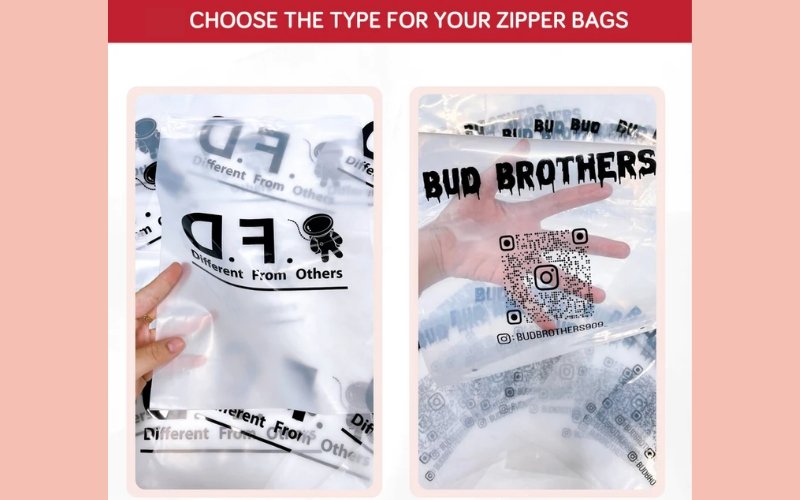
Read more:
Choosing the right zipper bag material is crucial for both practicality and sustainability. This article explored the diverse options – plastic, fabric, and eco-friendly alternatives – highlighting their respective advantages and disadvantages. Ultimately, the ideal choice depends on individual needs, balancing factors like intended use, budget, durability, and environmental concerns. For custom zipper bag solutions that align with your specific requirements, contact Packlove. Visit our website for more information and explore our full range of packaging options.

